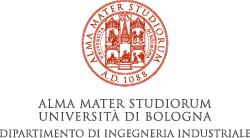MERCEDES.
MERCEDES BENZ, ELECTRICITY AND STATION WAGONS
Mercedes Benz presents the trajectory of its research on electrification, from the early 190 E Elektro to the EQS fleet.
The automotive marque widely recognised by its three-pointed star is exhibiting the pioneering 190 E Elektro, an experimental model with an electric motor for each of the two posterior wheels, first presented in Hanover in the 90s. At the opposite end of the company's evolution, we find the EQS fleet, which represents the peak of Mercedes-EQ electrification.
EQ s is the first fully electric Mercedes luxury saloon and the first model to base itself on modular architecture created exclusively for superior and luxury categories electric vehicles.
The second focus is dedicated to Station Wagons.
From its early origins in the 50s to the new Class C, the heir of the Stuttgart-based company's original station wagon.
The first Station Wagons bearing the star were the product of specialised car assemblers who, already in the 1950s, used Mercedes frames to build professional modes of transport for a wide range of uses. In the late 70s, the Stuttgart-based car manufacturers had its finger on the pulse and understood there was a never-met-before demand for luxury and functional sports cars with five doors. The station wagon wasn't just a work car or a 'labour' car: it was the reflection of a dynamic and refined lifestyle. So, in 1977 - under construction name S123 - the T Model made its debut. It was the first modern wagon designed and officially produced by the car manufacturing house. The ambassadors of this versatile bodytype at AME 2021 are a 1984 E 230 TE (S 123) and a 1993 E 320 SW (S 124); both models bear witness to the continuous technological advancement of Mercedes station wagons, which finds its continuity and coherence in the new Class C car, the latest gem in a long line of station wagons hailing fro
The automotive marque widely recognised by its three-pointed star is exhibiting the pioneering 190 E Elektro, an experimental model with an electric motor for each of the two posterior wheels, first presented in Hanover in the 90s. At the opposite end of the company's evolution, we find the EQS fleet, which represents the peak of Mercedes-EQ electrification.
EQ s is the first fully electric Mercedes luxury saloon and the first model to base itself on modular architecture created exclusively for superior and luxury categories electric vehicles.
The second focus is dedicated to Station Wagons.
From its early origins in the 50s to the new Class C, the heir of the Stuttgart-based company's original station wagon.
The first Station Wagons bearing the star were the product of specialised car assemblers who, already in the 1950s, used Mercedes frames to build professional modes of transport for a wide range of uses. In the late 70s, the Stuttgart-based car manufacturers had its finger on the pulse and understood there was a never-met-before demand for luxury and functional sports cars with five doors. The station wagon wasn't just a work car or a 'labour' car: it was the reflection of a dynamic and refined lifestyle. So, in 1977 - under construction name S123 - the T Model made its debut. It was the first modern wagon designed and officially produced by the car manufacturing house. The ambassadors of this versatile bodytype at AME 2021 are a 1984 E 230 TE (S 123) and a 1993 E 320 SW (S 124); both models bear witness to the continuous technological advancement of Mercedes station wagons, which finds its continuity and coherence in the new Class C car, the latest gem in a long line of station wagons hailing fro












